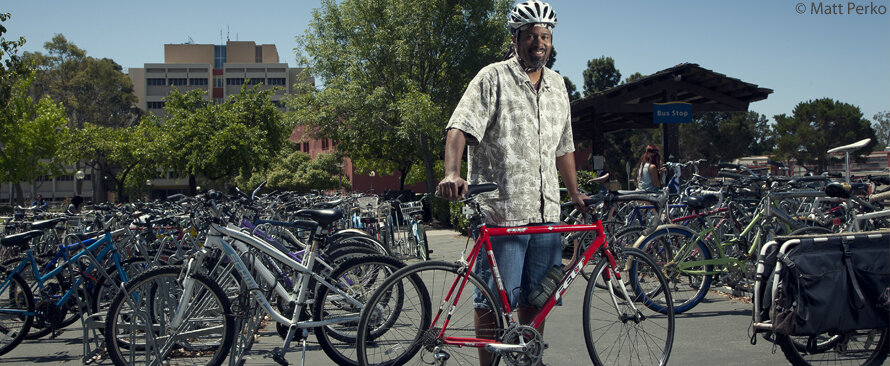Use Pedal Power to Cut Your Carbon Emissions
As the cost of hybrid and electric vehicles continues to decrease, the switch to fuel-efficient cars becomes more appealing – but the purchase or lease of a new car isn’t right for everyone. While a hybrid or Electric Vehicle may be on your horizon, an easy way to bypass the fuel pumps today is, of course, to dust off your bicycle. Just riding your bike one weekday out of five can help to significantly increase your effective mpg rating.
Let’s do some math.
Suppose your commute distance is 10 miles round trip and your vehicle averages 30 miles per gallon; this means one gallon of gas will last you three days (30 miles). If you bike the other two days (20 miles), you effectively traveled 50 miles that week on one gallon of gas. That’s 50 mpg. From 30 to 50 mpg means considerably fewer trips to the gas station and a smaller carbon footprint.Interested in calculating your own effective mpg?
Here’s a simple formula:
multiply your car’s mpg rating by 5 (or the number of days in your workweek)
divide that by the number of days you spend driving
With current average California gas prices hovering around a steep $4 per gallon, you’ll notice immediate savings if you increase your fuel efficiency by riding your bike. Relying less on your car can also help to reduce maintenance costs and money spent on parking fees. If your commute to work is within reasonable biking distance, you could be looking at sizable savings.
You can also feel good about reducing your carbon dioxide emissions and overall carbon footprint. Each gallon of gasoline burned releases 20 pounds of CO2 into our atmosphere. By using your effective mpg rating, you can also calculate your effective carbon emissions per mile. Simply divide your mpg rating by 20. For example, a mpg rating of 30 produces 2/3 lbs. of CO2 per mile whereas an mpg rating of 50 produces just 2/5 lbs. of CO2 per mile. Adding a bike to your commute routine is a great step for minimizing your carbon footprint, especially since transportation accounts for 51% of a typical American household’s carbon emission sources.
